





Kandolo Jire Christian, Georgina Mampuru
ORCID ID: 0000-0001-8185-7564, 0000-0002-5793-693X
Cape Peninsula University of Technology
Cape Town
Western Cape
People infected with COVID-19 can experience trouble breathing since the virus primarily attacks the lungs. It is a highly contagious virus that can be transmitted easily. Leading to high numbers of hospitalised patients, and hospitals can become overwhelmed. Ventilation is the primary source of treatment in severe cases, shortages of equipment can occur leading to a high death rate. The present paper aims to design and develop a low cost, user-friendly and automated bag valve mask ventilator capable of supplying oxygen to a patient. During the pandemic, we were using traditional intensive care ventilators since manual ventilation prompt to some serious health risks. The device is using a simple hardware device such as Arduino. Keywords: Ambu bag, bag valve mask, Arduino, ventilation, automated, COVID-19.
COVID-19 is an infectious disease caused by a novel coronavirus. It is a highly contagious disease that began in Wuhan in China at the end of December 2019 (Iyengar, Bahl, Raju Vaishya & Vaish, 2020). Coronavirus disease 2019 (COVID-19) led to increased mortality rates by overwhelming medical infrastructure at the regional level. Mechanical ventilators, which are essential for treating both influenza and COVID-19 patients in severe acute respiratory failure, are in critically short supply in some locations. During pandemics, intensive care units (ICUs) do not have sufficient ventilators to treat all the patients requiring them which forces triage and rationing This is despite national stockpiles of proprietary, mass-manufactured ventilators, which are simply not numerous enough due to prohibitive costs to service society during an extreme pandemic (Petsiuk et al., 2020).
For the hardware parts as illustrated in the Figure 1, the mechanical concept replaces the action of a human pressing the bag. Manual ventilation with excessive volume and pressure can cause severe complications for patients, particularly vulnerable patients suffering from Acute Respiratory Distress Syndrome (ARDS), including those infected with COVID-19. Since acute care facilities are currently treating large numbers of COVID-19 patients, understanding the implications of poor BVM techniques among this insurgent population (Culbreth & Gardenhire, 2021). The design of the compressing mechanism is a crucial stage in development.
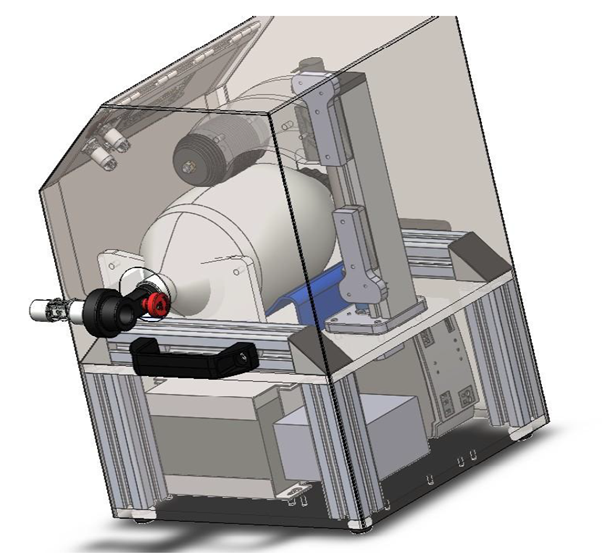
To simplify the cost of equipment we opted for cheap but reliable devices. The main electrical component is the Arduino board. In this application we used a Controllino (Figure 4) which is an industry-grade PLC with open-source software, fully compatible with Arduino. We are using a brushless DC motor (Figure 3), and to control the speed, we have a speed controller (Figure 2). Raspberry Pi is used here to improve our software architecture. The integration of these components is shown in Figure 5. Such Examples of low-cost designs can be found in (Chang et al., 2021). Such example is the Masi ventilator that could be rapidly and manually manufactured. The ventilator has the capabilities to manage COVID-19 patients with severe acute respiratory distress syndrome (ARDS). Most COVID-19 patients who develop acute respiratory distress syndrome (ARDS) often require prolonged mechanical ventilation.
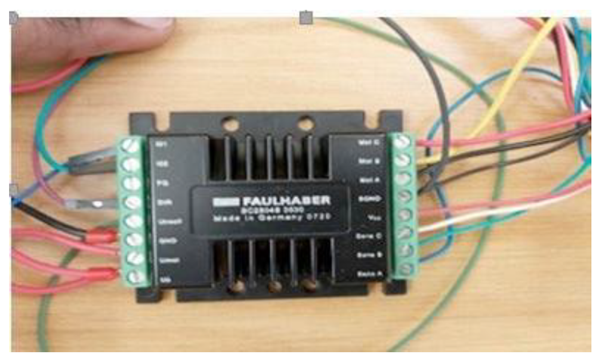
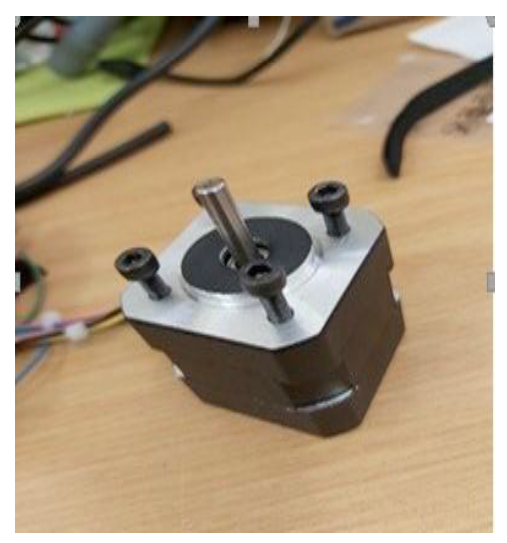
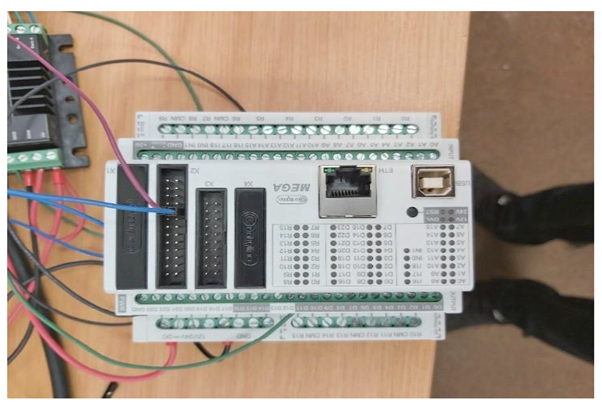

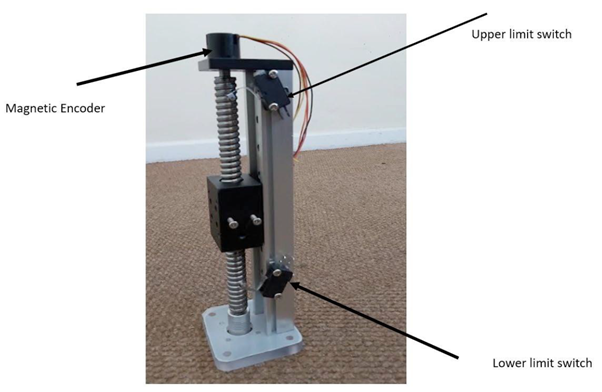
Figure 6 shows the scalar and its main part which are limit switches that helps stop the motor from both positions. We have a scaler that will be moving following the movement of the motor and speed. Our goal is to deliver oxygen to a patient. But patients have different needs. The figure below expresses the clinical breath per minute required for each kind of patient.
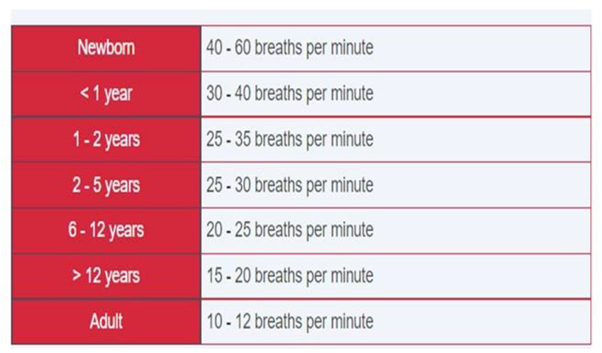
The different Breath Per Minute for each age group is shown in Figure 7. As we observe there are different breath per minute (BPM) rates. The algorithm is supposed to correct or implement the correct BPM required. We are achieving this by varying the speed and the position of the motor on the scaler. This is achieved by the magnetic encoder shown in Figure 8 below. An Incremental Magnetic Encoder provides an integrated solution for angular detection within a complete 360° rotation. The use of magnetic technology for motion control and sensing activities eliminates mechanical contact and enables this device to be free from mechanical wear and tear. The threechannel output provides an additional index channel for every full rotation or revolution of 360°. An additional advantage is that the encoders near the upper limit switch rotational speed limits are typically only limited by the application's bearing speed.

Figure 8 represents how the different components interact. The Controllino board is the controlling component. Our goal is to make the Ambu bag deliver oxygen automatically using a motor. This is achieved by setting different speeds controlled by the speed controller at different positions controlled by the magnetic encoder. To get a better picture, a magnetic encoder works through a set of pulses that represent the rotation of the motor. This means each rotation corresponds to a pulse. For a certain number of pulses, the motor will rotate, and this will be interpreted as a point that the scaler has reached. The breath cycle is made up of two main phases, inspiration, and expiration. The scaler has an upward movement and a downward movement which is decompressing or (Expiration). The algorithm will use those two, major concepts to successfully represent those movements. The objective here is to study the required number of pulses to reach a certain position corresponding to a certain volume of air supplied. The speed is a factor of breath per minute, which means the number of breaths that can be supplied to a patient under certain conditions.
Since this a medical device it is necessary to have a testing phase to see if it follows the standard to be used by health professionals. As shown in Table 1, MIT describes that the apparatus required for testing ventilators are:
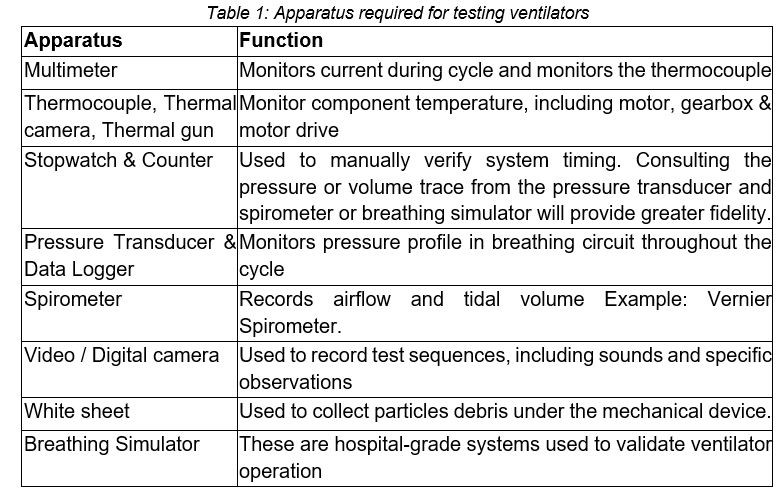
The South African Health Product Regulatory Authority (SAHPRA) is the body in charge of regulating and certifying medical devices in the country. The device must be approved by SAPHRA. Therefore, the device would also need to comply with the ISO standards below:
COVID-19 caught the world by surprise and did not allow for much preparation. While the pandemic is ongoing, we remember the peak of the pandemic where hospitals were overcrowded due to high infection rates. The main problem was how to treat everyone without enough ventilators. The easiest solution is to use a manual oxygen supplier (i.e., Ambu bag) but this solution is not recommended over the long term since human misuse could occur. We proposed to supply hospitals and health workers with a fully automated device. The main aspect was to make it affordable, easy to use and to develop a working algorithm that will make it perform as traditional ventilators. Software like python and open-source devices and hardware, like Arduino were selected.
We would like to thank our various colleagues, mentors, the AMTL staff and other persons that contributed directly or indirectly to this work.
Chang, J., Acosta, A., Benavides-Aspiazu, J., Reategui, J., Rojas, C., & Cook, J. et al. (2021). Masi: A mechanical ventilator based on a manual resuscitator with telemedicine capabilities for patients with ARDS during the COVID-19 crisis. Hardwarex, 9, e00187. doi: 10.1016/j.ohx.2021.e00187
Culbreth, R., & Gardenhire, D. (2021). Manual bag valve mask ventilation performance among respiratory therapists. Heart & Lung, 50(3), 471-475. doi: 10.1016/j.hrtlng.2020.10.012
Iyengar, K., Bahl, S., Raju Vaishya, & Vaish, A. (2020). Challenges and solutions in meeting up the urgent requirement of ventilators for COVID-19 patients. Diabetes & Metabolic Syndrome: Clinical Research & Reviews, 14(4), 499-501. doi: 10.1016/j.dsx.2020.04.048
Petsiuk, A., Tanikella, N., Dertinger, S., Pringle, A., Oberloier, S., & Pearce, J. (2020). Partially RepRapable automated open source bag valve mask-based ventilator. Hardwarex, 8, e00131. doi: 10.1016/j.ohx.2020.e00131